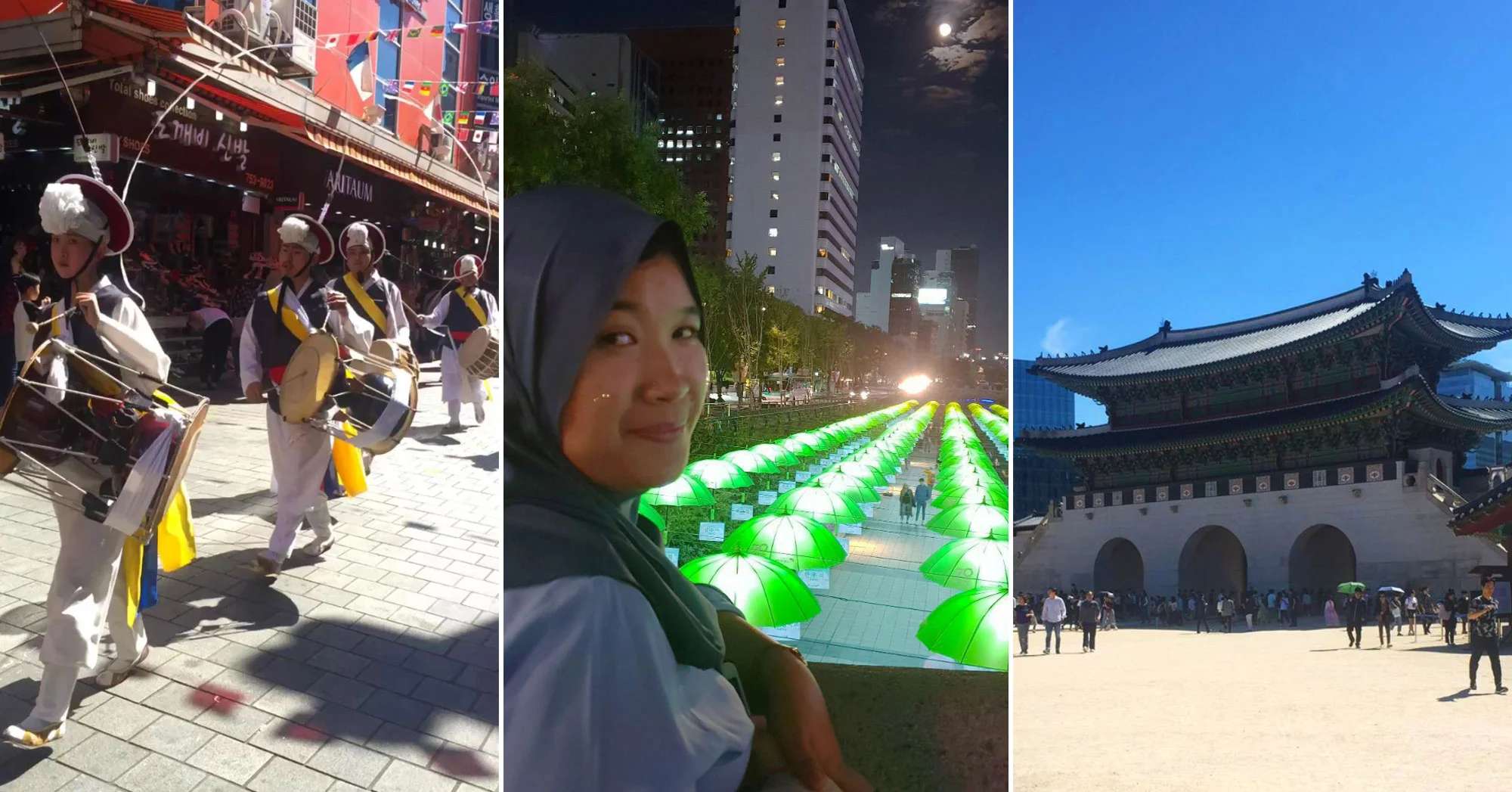This story about visiting Seoul, South Korea during Chuseok (Korean Thanksgiving, equivalent to Mid-Autumn Festival) is written by one of our contributors, Saha. Some parts of the article may have been edited for length and clarity.
It started off as an impromptu trip to Seoul. I only booked the plane ticket and hotel just barely a week before my trip, for me and my forever travel buddy (who is also my brother). My other brother also decided to join us on the last very minute. So, Seoul here we come!
From my travels, I have developed a habit of doing my research prior to my vacay trips. But it was not until 3 days prior to the trip that I found out that I will arrive in Seoul on the night of Chuseok (Korean Thanksgiving or Mid-Autumn holiday). Long story short, from my research, I was to expect a very very quiet Seoul as Seoulites would go back to their kampong (hometown) to celebrate Chuseok and visit their elders and extended family members, embracing and remembering their roots, paying respect to their departed loved ones, which in my personal view is very much like how Eid (ul- Fitr) is, I would say. So as it was already too late to reschedule, we went ahead and try to enjoy our time there as much as possible.
Come D-Day, we arrived at Incheon airport via direct flight from Brunei, which took less than 6hr. After baggage claim was sorted we went straight to the AREX Terminal to get the all stop ticket to, Seoul. We hopped on the train and arrived at our hotel room approximately 2 hours later at the heart of Myeongdong.
The next morning, after having light breakfast, we headed to Gyeongbokgung (or Gyeongbok Palace) Seoul’s most majestic and grandest palace which is unique as it is surrounded skyscrapers. For me personally, a visit to Gyeongbukgung is mandatory as it’s like doing “insa” (greetings in korean).

Much to our delight, admission was free for the day in conjunction with Chuseok. The tourists' traffic was much less than normal, and instead, there were more locals of all ages than you would normally see on a regular day. Harabojis’, halmonis’, ahjusshis’ ahjummas’, young adults and children were mostly dressed in colourful hanbok (Korean traditional garment). Some were just strolling, some dancing, having picnics or just chilling out. We stayed on until around lunch time. While we were there, we witnessed the change of guard ceremony. This activity is scheduled throughout the day. Later, we headed out to Itaewon for lunch and went for a quick visit to the Seoul Central Mosque. In the evening, we strolled along Cheonggyecheon stream and enjoy the quiet and tranquil evening.
P.S. Check out our halal Korean food guide in Seoul!


The next day, we set out early for our half-day trip out of Seoul and arrived at our first destination, Nami Seom (Nami Island) just around noon, which was just perfect as it was just in time for Zuhur prayers (tips: we performed the jama’ for Zuhur and ‘Asr). They have a prayer area with an ablution area and the area is separated for male and females. There’s also a halal-certified restaurant on the island which serves Asian food.

In the afternoon, we left Nami Seom for our next adventure i.e. rail bike at the nearby Gangchon Rail Park in Chuncheon.

I have to say that it was the highlight of the day, where we got to enjoy rail biking and feasting our sights with beautiful mountain and river landscape.
P.S. Planning to head to Nami Island and go on the rail bike? Check out our 5D4N Seoul itinerary here!

No words are enough to explain just how beautiful Allah S.W.T.'s creation is. Major love.
We went back to Seoul and arrived early evening. After freshening up, we went to have dinner in Myeongdong. We expected a very very quiet Seoul, and much to our surprise, it was a blatant lie ? IT WAS NOT QUIET AT ALL!
P.S. Check out these 11 insider tips for shopping in Myeongdong!

Screenshot from my IG story showing how crowded Myeongdong was on Chuseok ?
We had a free and easy day the next day, we had late brunch at halal Korean restaurant in Myeongdong and went to the traditional markets nearby. First, we went to Dongdaemun where it was super quiet as most shops are closed. We didn’t stay for long and headed to Namdaemun next, expecting that it will be quite similar. But it was the opposite! Namdaemun is as lively as a market can get. The shops were selling everything that you could ever imagine, from army uniforms, blankets to trinkets, face masks, BBQ grills, pots and pans and colourful traditional snacks and sweets in various shapes and textures. There was even a short parade of performances showcasing Korean folk dance and music. We made a good call that day, visiting Namdaemun. Then on, Namdaemun is always in my go-to-list whenever I visit Seoul.

Communication wise, it was fairly easy to communicate, most shopkeepers were able to understand basic English, and on rare occasions, some were even able to speak in fluent Malay. I have something to share while we are at the subject, ‘language barrier’. As a disclaimer, I do not really speak Korean. Although I do understand a few Korean phrases, thanks to binge-watching Korean dramas all these years. On the contrary, during the trip and on several occasions, I had a full conversation with some non-English speaking shopkeepers, where they would talk in Korean and I would reply them in English, while neither of us speak in the other’s language. It was epic! My brothers would still laugh and be amazed at the same time at the bizarre-ness of the whole situation.
P.S. Want to share your tips and stories to help Muslims travel better? Email us at editorial@havehalalwilltravel.com or send us a DM on Instagram.
Join our channel!Join HHWT’S channel





